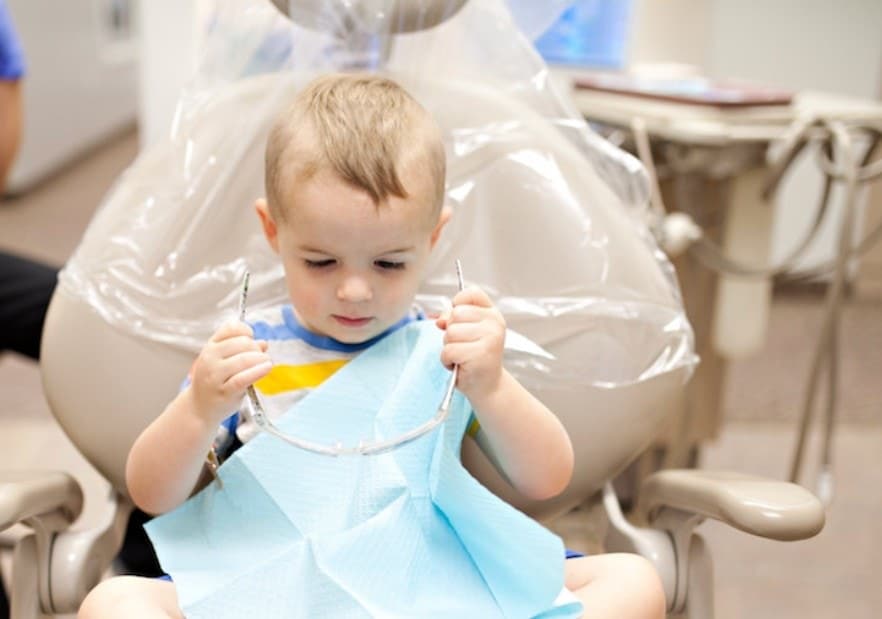Are essential oils safe for baby?

What to do and what not to do when it comes to infants and essential oils.
There’s nothing like motherhood to make you freak out about absolutely everything. Suddenly, the whole world is a death-trap, infested with treacherous microorganisms maliciously working against your perfect baby. And then, come to find out, all the remedies out there — from the over medicalized to the most homeopathic — present their own set of dangers. Essential oils, which can help with as many things as sleep, stress and skin rashes, are no exception.
With a trending interest in natural treatments, essential oil use for babies is on the rise. So I decided to find out what’s okay for baby and what isn’t. After all, what’s natural is certainly better than what’s not; but it is critical to make sure your methodologies are correct.
“We all want the absolutely best for our children,” said Jennifer Abbott, owner of the Oily Babies Instagram page and a distributor and teacher for doTerra. “We want to keep them from getting sick; help them feel better quickly if they do get sick; give them a good night’s sleep; stop the itching bug bite. And I wanted to do it using natural products.”
After a friend shared a bottle of TerraShield to protect against bugs in the woods, Jennifer was hooked and used essential oils not only to get over illnesses more quickly, but also to prevent them altogether. She’s continued to use essential oils since, which have also helped with labor and delivery recovery.
“I’ve seen first-hand how medicine can improve and save lives,” says Jess Staton, a Brooklyn mom and registered nurse, who also works with doTerra. “However, while many practitioners will be looking for the least drastic intervention first, others will just throw a prescription at you. For instance, if you have high blood pressure, before prescribing medication, hopefully your doctor will have you change your diet, reduce your salt, begin or increase your exercise program and reduce your stress.”
Jess thinks essential oils can be a big part of those holistic, first-measure changes when it comes to a healthy and preventative lifestyle. “Sometimes the best thing is a medication or some other medical intervention; other times, you can use other tools to reduce symptoms and feel better.”
So if you are convinced and ready to integrate essential oil use into your baby’s routines, where do you start?
As with anything, using oils safely is important. According to Jennifer, the most common reaction is skin sensitivity. She advises to always do a skin test first and to dilute oils with a carrier oil, not water — something like coconut oil, jojoba oil, olive oil.
“A good place to start is by applying diluted oil to the bottom of the child’s foot,” said Jess. “The skin is not as sensitive but the oils are easily absorbed from the bottoms of the feet.” If there’s no reaction after a couple of minutes, the oil is probably safe to use. Try to test one oil at a time so that, if baby does get a reaction, you know which oil actually triggered it.
Once you know what oil works and is safe, you can rely on oil-specific tools to make the job easier and safer. Some of Jennifer’s go-tos are roller bottles, 5 or 10ml, which make your oil routine more practical. “Once you make a few roller bottles, you can set them by the bed or toss them into the diaper bag for easy use,” Jennifer says. Make sure your bottles are glass so you don’t compromise the purity and attributes of the oil. Alternatively, if you aren’t keen on topical application, you can use a diffuser. For example, you can help baby get a good night’s sleep by diffusing lavender oil.
Though natural, essential oils are potent and can be harmful, so you don’t want baby to ingest them. If you’re applying the oils directly on the skin, choose a part of the body that baby won’t suck on, like behind the ears or in the back; and avoid the face altogether. Also avoid adding essential oils to baby’s baths — splashing increases the risk of ingestion or eye and skin irritation.
Oil use can require a lot of research, so before using them, “Ask questions and know who you are getting your information from,” Jennifer says. “There are a few books out there about the safety of oils written by someone with no background in chemistry.” She loves following Dr. Pappas from Essential Oil University. He supplies a lot of information about the chemical makeup of oils, their purity, and how to dilute them.
Whatever primary health needs or concerns you may have — whether it’s for teething, sleepless nights, stress or rashes — implement in small steps and pay attention to the difference it makes in your little one’s health and wellbeing.
“There is an oil you can try for anything!,” Jennifer says.
And to give you a good place to start, here are Jennifer’s and Jess’s go-to oils and how to use them:
JENNIFER
Serenity: Dilute 1-2 drops in a tsp of fractionated coconut oil; or diffuse 3 drops at bedtime or overnight in an ultrasonic diffuser. “This oil changed sleep for our entire family. I ran out of it once and no one slept for about a week!”
Roman Chamomile: Dilute 1-2 drops in 1 tsp fractionated coconut oil rub on the feet to help sooth a fussy babe, or on the jaw line when baby is asleep to help reduce teething pain.
Fennel or Lavender: Dilute 1 drop in 1 tsp of fractionated coconut oil and rub on tummy clockwise for colic or gas issues.
JESS
Serenity, which blends of lavender, sweet marjoram, Roman chamomile, ylang ylang, Hawaiian sandalwood and vanilla.
Roman Chamomile: “This is a wonderful oil for calming. I love the smell and it is also good to use when little ones are teething.”
Frankincense: “Such an amazing multi-use oil. I apply it to the crown of the baby’s head for bonding and also use it diluted on the bottoms of feet for boosted immunity and (heavily) diluted and applied topically for skin concerns. Though, sidenote: breastmilk is also great to use on baby’s skin!”





































